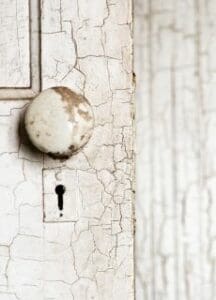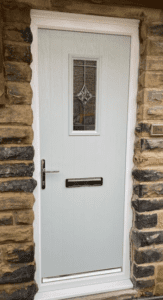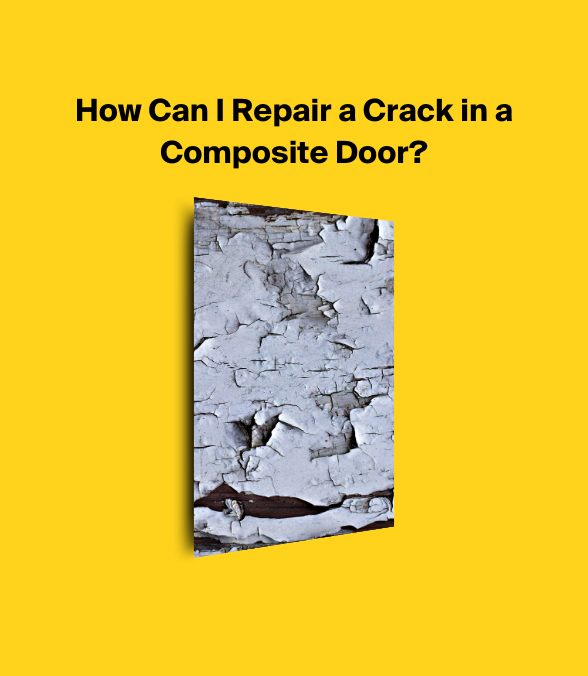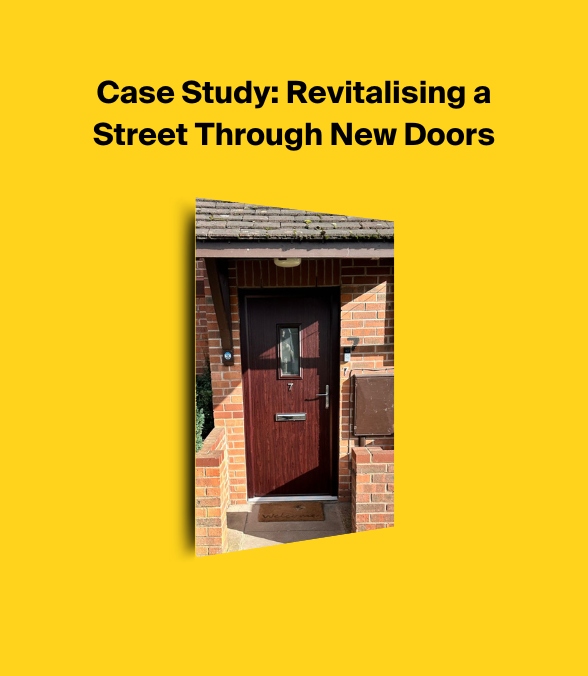Is Your Composite Door Cracking?
A composite door will provide you with decades' worth of home security. It will also keep the heat inside during the winter and give your home facade a stylish touch.

Here at Value Doors, we supply only the most durable composite doors - ones that will require minimal DIY touches throughout the 30-year guarantee.
However, there are some common problems that all composite door owners should know and know how to fix. A composite door crack is one of them.
Here's how to diagnose your composite door cracking problem and also how to resolve the issue:
Why is my Composite Door Cracking?
If you hear your composite door making creaking noises or if you notice any obvious cracks on the outside of the door frame, you shouldn't worry.
The damage will be done to the uPVC exterior - not the solid wood on the inside.
Our composite doors come with a UV-stable CoolSkin, which helps prevent the doos from fading or chipping. However, despite this protection, the exterior of your composite door could still be subject to cracking.
So, why do composite doors crack? Because of one of the following reasons:
The weather
Your composite door could have a cracking problem due to the weather. If you live in an area that experiences drastically different weather conditions, your door may crack due to the uPVC expanding and contracting over time.
If you find that your composite door is difficult to close in the summer, it may be because it's expanded in the heat. If so, the weather is probably the root cause of your door cracks.
When the weather starts to cool down, the door undergoes a reverse effect, which will cause cracking sounds. In worst cases, these noises will lead to visible cracks along the door.
Accidental damage
Although highly durable, your new door isn't 100% safe from accidental damage. Weather caused by harsh cleaning agents or something banging into the door, cracks can be made to the exterior.
This damage will only be aggravated as the materials expand in summer, causing the damage to become more visible.
However, it's important to remember that the UPVC surface of the door is there for protective purposes. If cracks do occur, it means the exterior is doing its job by protecting the wood inside.
The size of your doorframe
If you hear audible cracking whenever you open or close your composite door, the issue could lie in the size of your door frame. If the doorframe is a good fit, this shouldn't be an issue.
However, if it's too small, it may be too tight for your composite door to fit comfortably inside.
As we've already mentioned, composite doors can warp and expand in the heat. So, although your door frame may have been fit correctly initially, it may outgrow its size in the summer.
With extra tightness around the perimeter of the door, your composite may develop visible cracks over its exterior.
How to Fix a Crack in your Composite Doors
Small cracks can easily be repaired. In the case of larger cracks, the CoolSkin exterior may need replacing. If the crack is near the door locks, we'd also recommend getting a replacement.
Generally, for small cracks, you'll only need a plastic filler, a cleaning agent, and grit sandpaper.
To fix a crack in your composite door, follow these instructions:
Step 1: Clean the broken area
It's important to not only clean the crack itself but also the area surrounding the crack. Use a uPVC-friendly, fragrance-free cleaning agent. HG uPVC Powerful Cleaner is a good option and is available on Amazon.
You should aim to clear all dirt that may have built up inside and around the crack.
After cleaning, allow the area some time to dry.
Step 2: Apply the compound
There are several good CoolSkin fillers available on Amazon. Weiss Cosmofen RM SP-710.110 is a good option, but there's also Silverhook BIG31 Big Boy Plastic Flexi Filler and JB Weld PlasticWeld.
Many plastic fillers come in two parts: a liquid and a powder. In this instance, you'll have to combine the two to create the compound as per the individual instructions.
Once the compound is ready, you'll need to apply this to the crack immediately. Compounds often begin to set within two minutes of exposure, so you'll need to act fast.
For best results, scoop up the compound on a putty knife and fill the crack with it. Ensure that the crack has been filled entirely and that there's enough compound on top, too.
Step 3: Sand down the compound
Once you've filled the crack with the compound, leave it to set fully. This should take around half an hour. Once the compound is totally hard, use sandpaper to sand it down so that it is level with the rest of your door.
The finished results should look totally natural and only really noticeable on close inspection. You can also paint over the filled crack to make it blend in better.
If this doesn't help, you might need to cut down your composite door so you can take a better look at the situation.
Why Value Doors Won't Crack as Easily
Compared to other suppliers, composite doors from Value Doors have a stronger weatherproof seal. The CoolSkin on our doors is designed to withstand all types of weather conditions, especially temperature changes.
Plus, our composite doors are grey, meaning they absorb and hold a lot less heat than black composite doors.
Not only is our CoolSkin great at protecting materials from all kinds of weather conditions, but it also offers maximum impact resistance. That means there's less chance of the door slab being damaged by bumps.
CoolSkin is made from a combination of uPVC and GRP (Glass Reinforced Plastic), which offers maximum protection.
When you buy from Value Doors, a professional installer will oversee the fitting of your front door. This means you can guarantee your door frame will be sized correctly, reducing the risk of cracking.
You can see what the best composite doors are with our guide, so you know which ones are the right choice for your home.

Final Thoughts
Although they're amongst the most durable doors available, cracks do occur in composite doors. This damage could be the result of the weather or accidental damage.
Luckily, it doesn't take a professional to fill the crack and make it appear as good as new. After applying plastic filler and sanding it down, you'll forget there ever was a crack!
Before you go, why not check out our tips and ideas for lots more advice regarding all things composite doors related?









